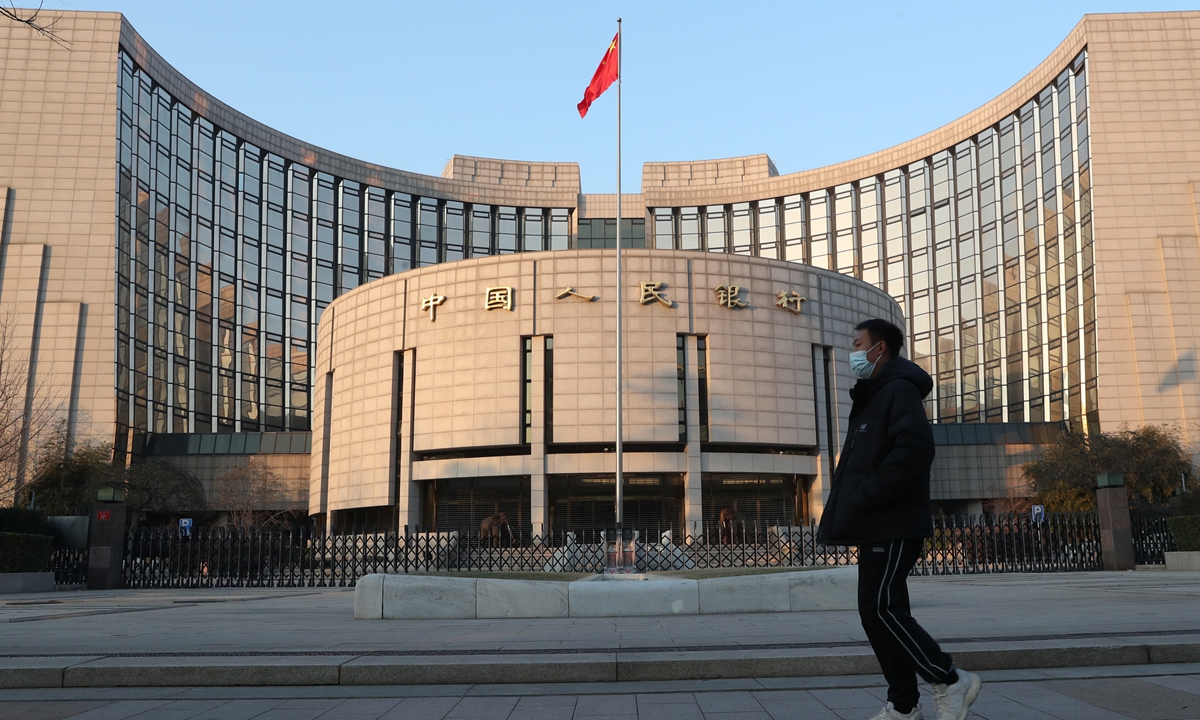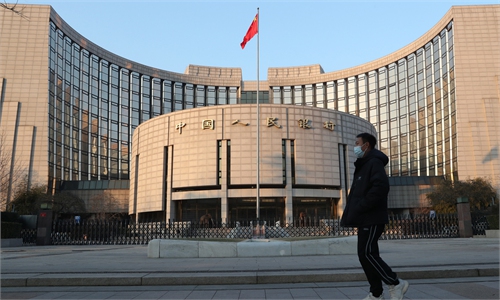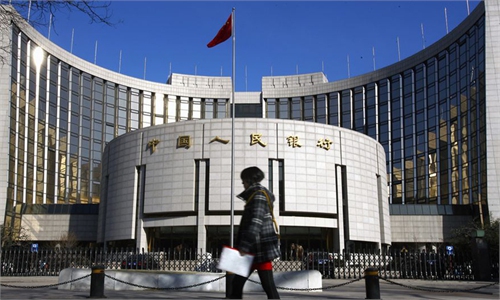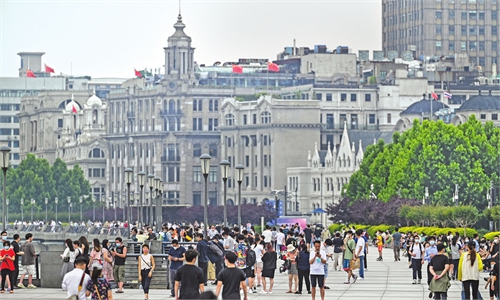
China's central bank Photo: CFP
China's central bank kept the lending benchmark loan prime rate (LPR) unchanged for July on Wednesday, as interbank rates stay low despite the US-led global monetary tightening.There's still room for more easing in the months to come, especially in the case of the five-year LPR, analysts said, citing an imperative to steady the housing market as part of broader efforts to support economic stabilization.
The one-year LPR was set at 3.7 percent in July, unchanged from the previous month, while the five-year LPR remained flat at 4.45 percent, the People's Bank of China (PBC) announced Wednesday.
The LPR quotations, updated each month, are based on a weighted average of lending rates from 18 designated commercial banks.
The one-year LPR is a reference rate for the majority of new and outstanding loans in the country, while the pricing of home mortgages is based on the five-year rate.
Short-term money rates that hover around low levels are seen justifying unchanged rates for the time being.
For instance, the overnight Shanghai Interbank Offered Rate, a gauge of funding costs in the country's interbank market, stood at 1.27 percent on Wednesday, up 2.8 basis points (bps) from the day before. The money rate reading has remained at low levels, suggesting reasonably ample liquidity in the market, although most other major central banks, including the US Federal Reserve, have embarked on aggressive monetary tightening.
Still, market watchers hold expectations for a downtrend in the lending benchmark, notably the longer-term rate, for the remainder of the year.
Mortgage rates still have room for a reduction, Yan Yuejin, research director at Shanghai-based E-house China R&D Institute, told the Global Times on Wednesday.
Some cities where local mortgage rates have yet to hit the lower end of the permitted range would see the third quarter as a significant timing for reduced mortgage costs, Yan said.
LPR rates are still open to more cuts ahead, as a policy boost is required to ensure the stabilization of the domestic economy and employment, the Securities Daily reported on Wednesday, citing Zhou Maohua, a macroeconomic analyst at Everbright Bank.
Whether the central bank introduces additional incremental policy instruments is contingent on the recovery of consumption and investment, Zhou said.
The PBC will flexibly employ multiple monetary policy tools at an opportune time, ramping up support for the real economy and keeping the economic operation within a reasonable range, PBC spokesperson Ruan Jianhong told a press conference in Beijing earlier in July.
In May, the PBC held the one-year rate steady at 3.7 percent, while lowering the five-year LPR by 15 bps to 4.45 percent in May, in order to bolster a slumping property market.



